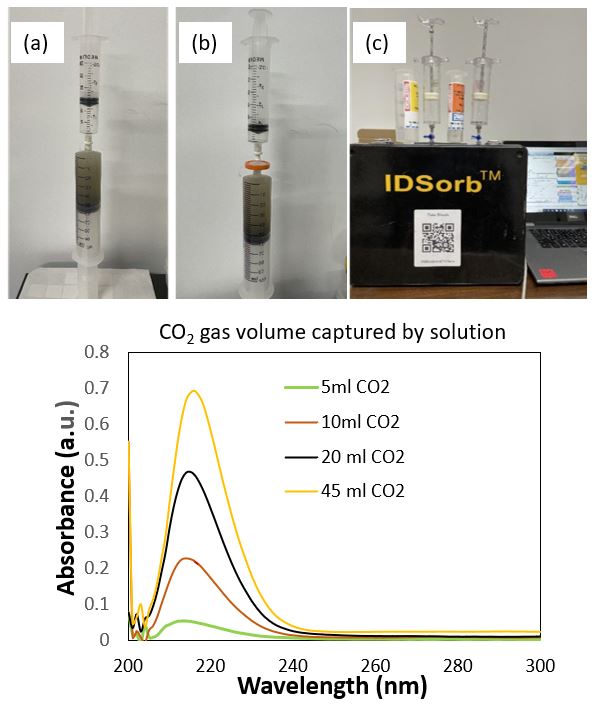Many technologies and processes are claiming carbon credit for CO2 capture, utilization and storage (CCUS) but such claims are not always easy to verify. In many cases, there are no net CO2 benefit [1] and no way of accurately measuring such benefit, even if it exists. One such example is CCU concrete produced from flue gas CO2 mixing with conventional concrete. This approach has the potential for sequestering significant amounts of greenhouse gases through carbon capture into widely used building materials and within the millions of miles of roads, highways, and sidewalks. Unfortunately, there is a lack of rapid and effective field measurement techniques for verifying a claim of net CO2 capture benefit during or following the conclusion of a construction project.
The IDS tool can be used as a field instrument for measuring the CO2 absorption and carbon capture during a CCS project. In its current form, the tool is highly effective at measuring and comparing the adsorption properties of the various materials used in carbon capture applications. For example, the adsorption properties of various building materials such as solid aggregates, cement, clay and fly ash powders added to the concrete mixture can be tested and analyzed. In addition, the CO2 absorption properties and selectivity of carbon capture liquids such as amines and sodium hydroxide alkaline solutions can be easily tested and compared.

(a) CO2 gas injected and mixed/absorbed into suspension; (b)-(c) suspension is filtered then measured by IDS and compared to calibrated references. Airtight dispensers are used to prevent gas escape by bubbling.

[1] Ravikumar, D., Zhang, D., Keoleian, G. et al., “Carbon dioxide utilization in concrete curing or mixing might not produce a net climate benefit”. Nat Commun 12, 855 (2021).